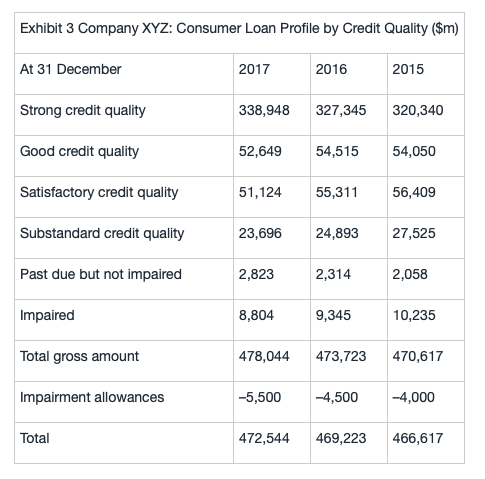问题如下:
Judith Yoo is a financial sector analyst writing an industry report.
Part of Yoo’s analysis focuses on Company XYZ, a global commercial bank, and its CAMELS rating, risk management practices, and performance.
To assess Company XYZ’s risk management practices, Yoo reviews the consumer loan credit quality profile in Exhibit 3.

Based on Exhibit 3, the trend in impairment allowances is reflective of the changes in:
选项:
A. impaired assets.
B. strong credit quality assets.
C. past due but not impaired assets.
解释:
C is correct.
Impairment allowances have increased proportionately to the increases in the amount of past due but not impaired assets, which may be in anticipation of these past due assets becoming impaired. Impaired assets have decreased each year while strong credit quality assets have increased each year, which suggests lowering impairment allowances as a result of improving credit quality of these financial instruments.
2015 to 2016 change in impaired assets: (9,345/10,235)-1=-8.7%
2015 to 2016 change in strong credit quality assets: (327,345/320,340)-1=2.2%
2015 to 2016 change in past due but not impaired assets: (2,314/2,058)-1=12.4%
2015 to 2016 change in impairment allowances: (-4,500/-4,000)-1=12.5%
2016 to 2017 change in impaired assets: (8,804/9,345)-1=-5.8%
2016 to 2017 change in strong credit quality assets: (338,948/327,345)-1=3.5%
2016 to 2017 change in past due but not impaired assets: (2,823/2,314)-1=22.0%
2016 to 2017 change in impairment allowances: (-5,500/-4,500)-1=22.2%





